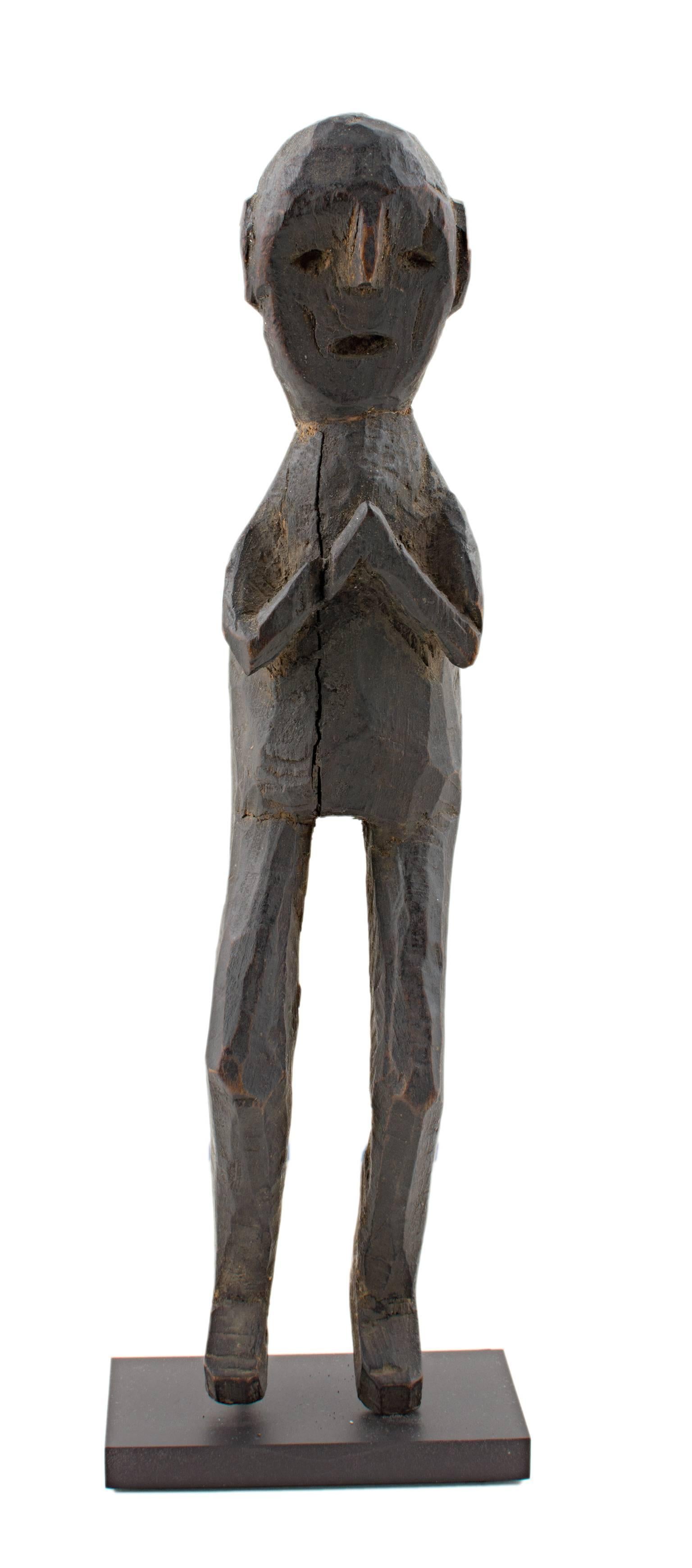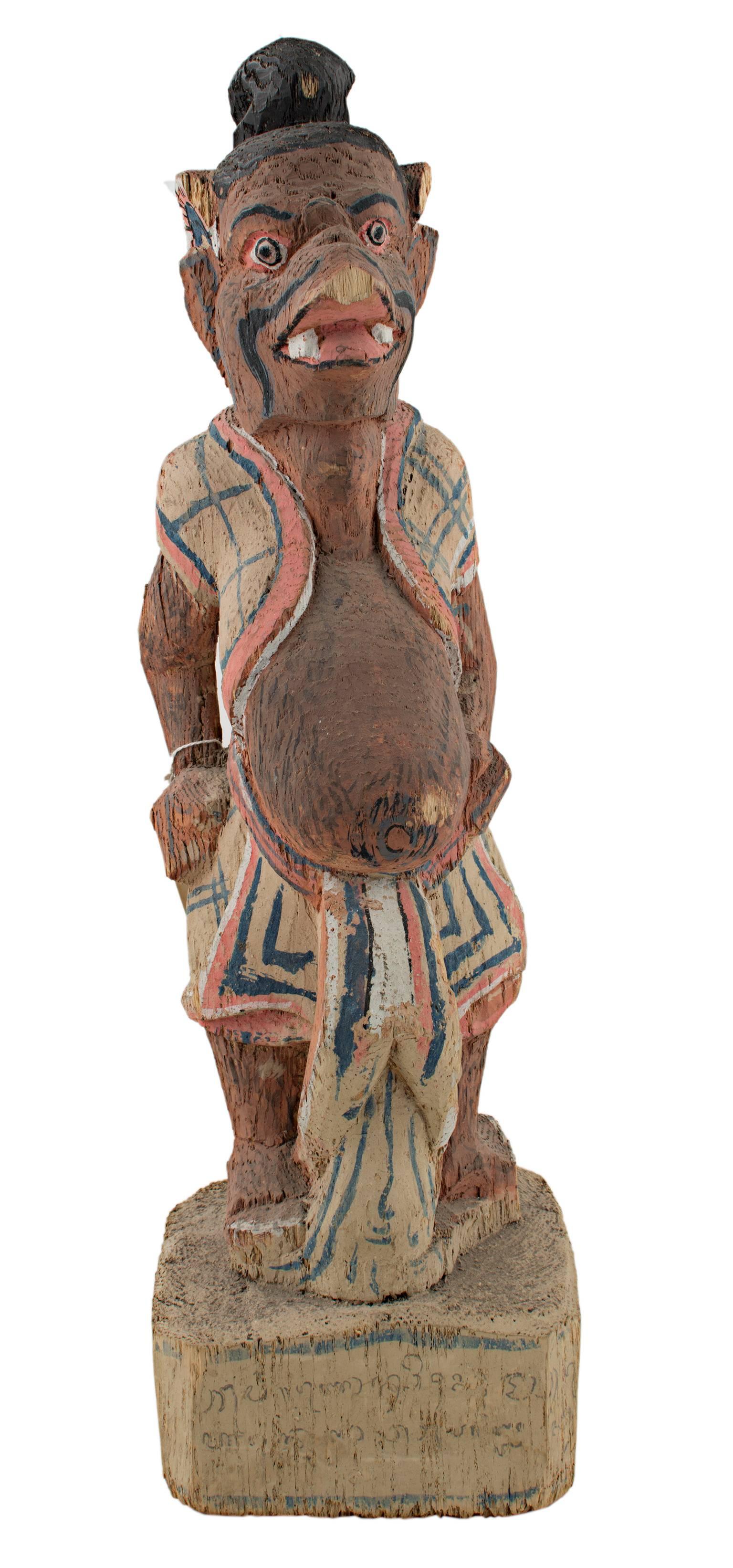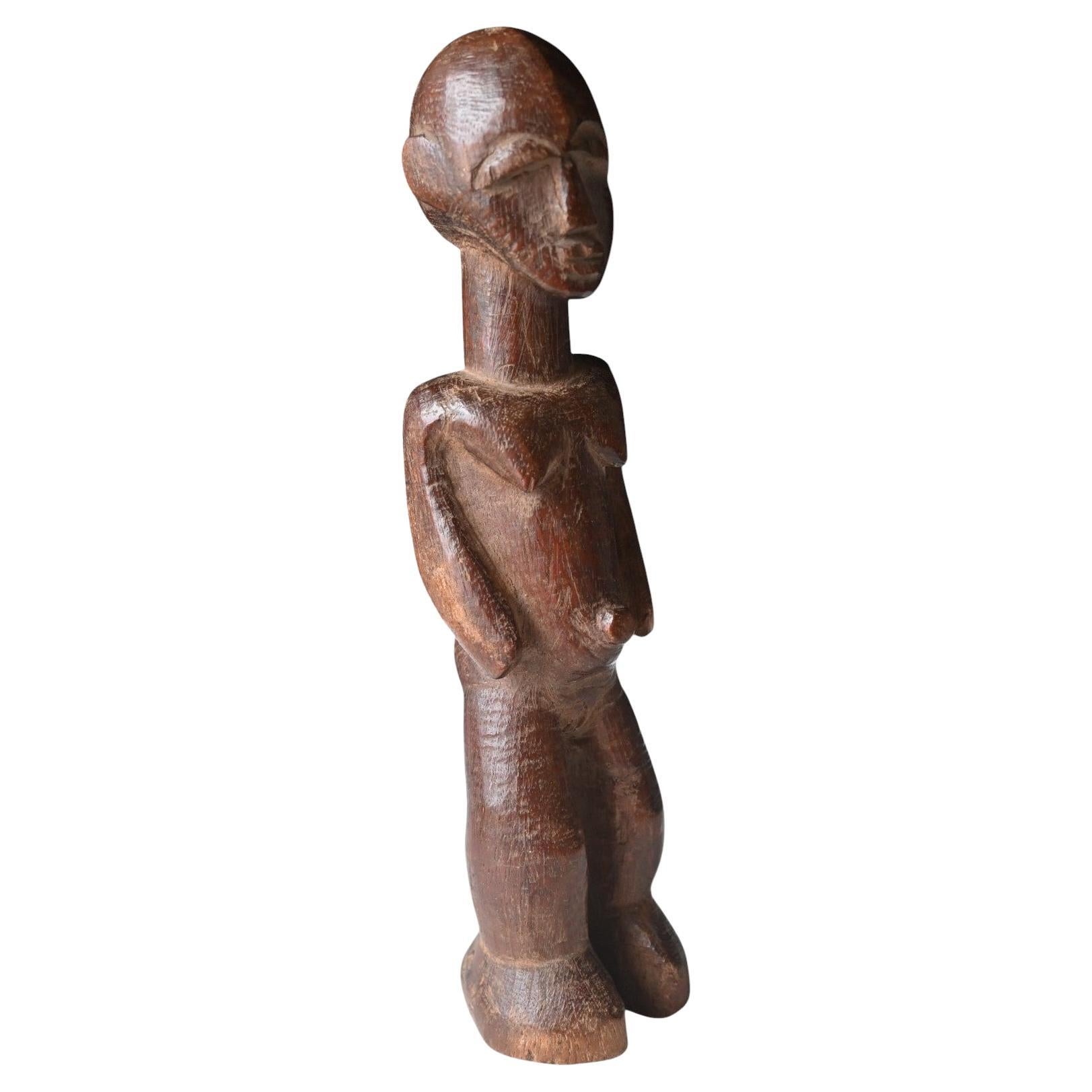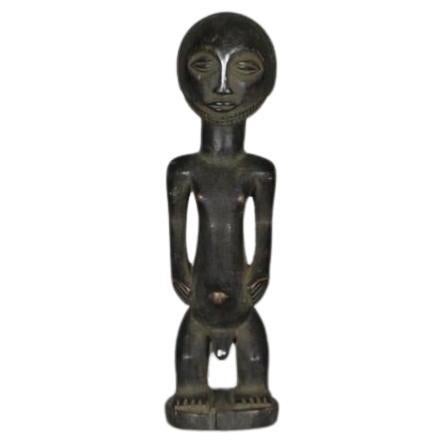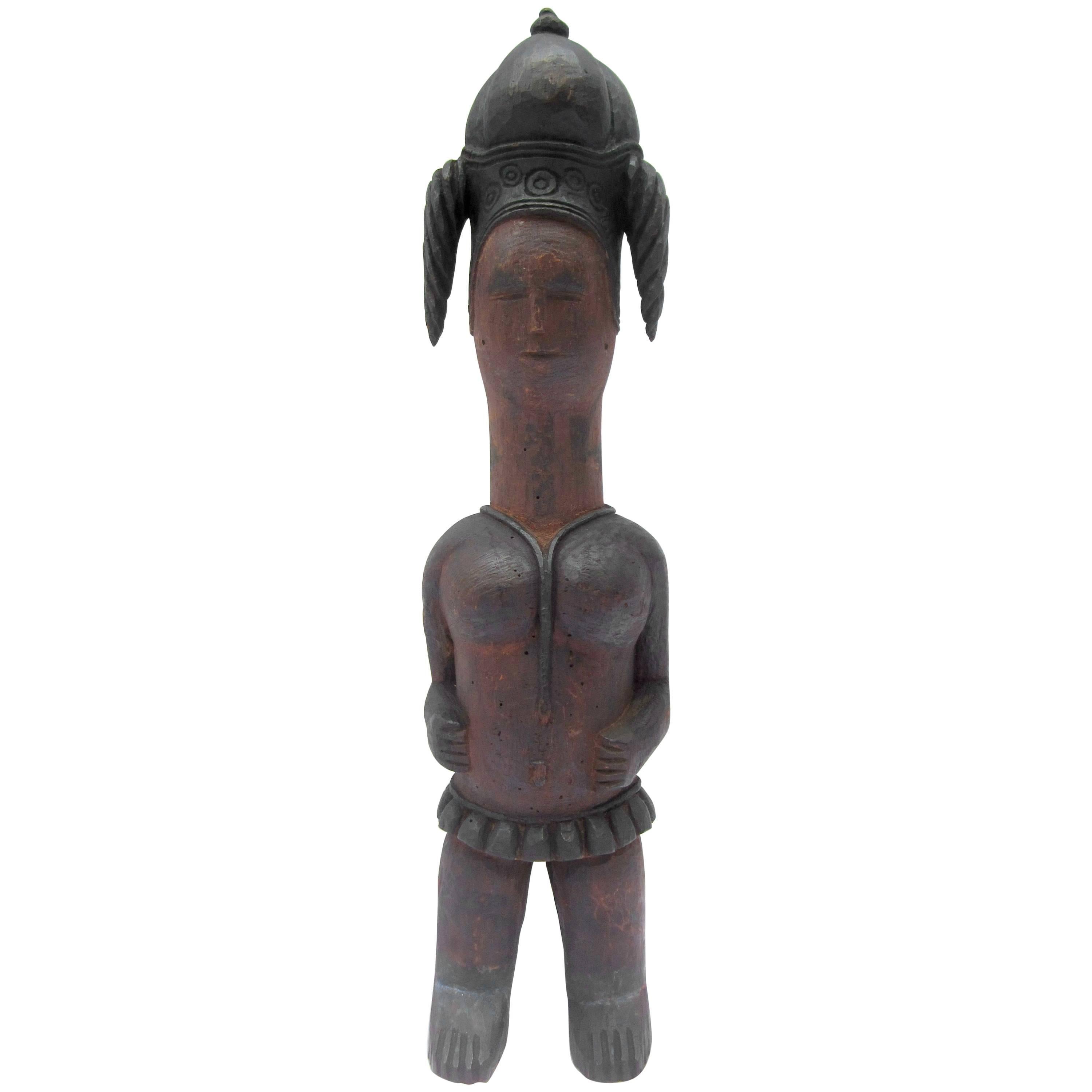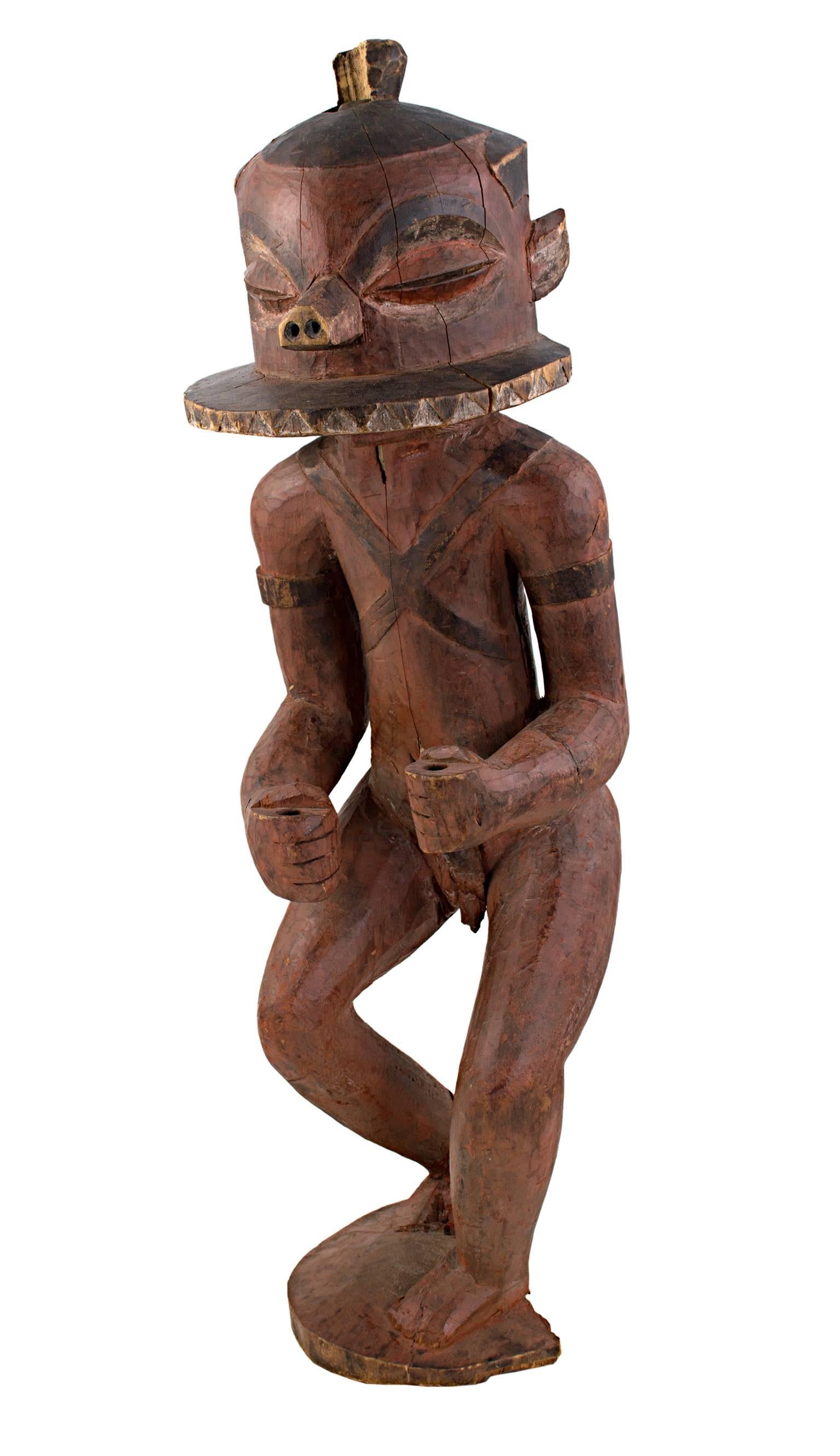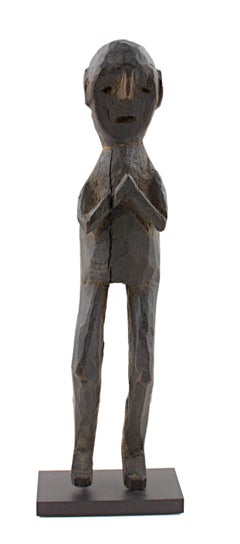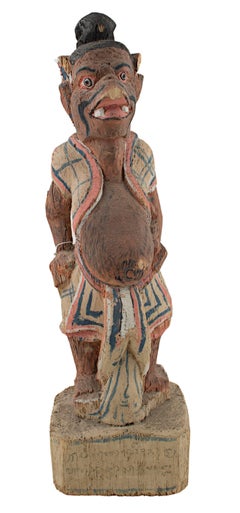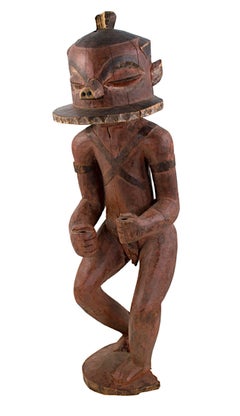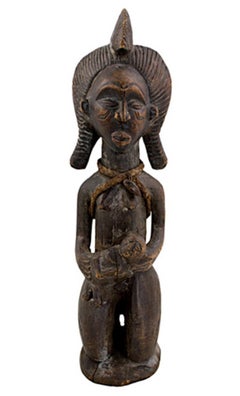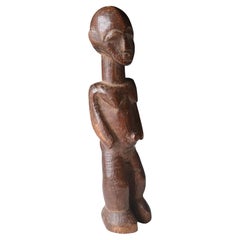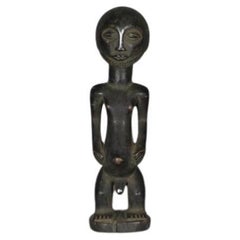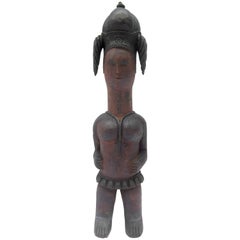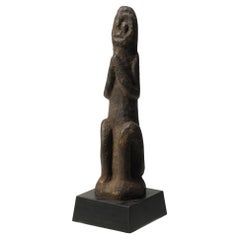Items Similar to "Dolpo Shamanic Figure, " Carved Wood created circa 1900
Want more images or videos?
Request additional images or videos from the seller
1 of 5
Unknown"Dolpo Shamanic Figure, " Carved Wood created circa 1900circa 1900
circa 1900
$1,900
£1,446.05
€1,656.13
CA$2,702.44
A$2,961.49
CHF 1,546.55
MX$35,589.04
NOK 19,334.60
SEK 18,235.61
DKK 12,361.15
About the Item
This shamanic figure was created by the Nepalese Dolpo people. It depicts a man with arms at his side.
11 1/2" x 2 1/4" x 1 1/2" figure
Dolpo is a region in Nepal. The Dolpo people (or "Dhol-wa" in their own language & "Dolpo-pa" in Tibetan) live in the Himalayan range of Dhaulagiri near the Tibetan border. The Dolpo-pa have a culture closely linked to Tibetan culture.
Since the occupation of Tibet, the Dolpo district of northern Nepal has been considered the last enclave of pure Tibetan culture left on earth. Dolpo lies at the same latitude as Cairo, but there the similarity ends. Dolpo is enclosed by a horse-shoe of soaring mountain peaks, higher than 21,000 feet. The cold, high desert of Inner Dolpo has been the home to people of Tibetan stock since the early centuries of the Christian era. In our own time, Tibetan refugees continue to trickle into Dolpo. Here in one of the poorest corners of one of the poorest countries on earth, Tibetan culture is undisturbed.
About the Seller
4.9
Platinum Seller
Premium sellers with a 4.7+ rating and 24-hour response times
Established in 1966
1stDibs seller since 2017
450 sales on 1stDibs
Typical response time: 3 hours
- ShippingRetrieving quote...Shipping from: Milwaukee, WI
- Return Policy
Authenticity Guarantee
In the unlikely event there’s an issue with an item’s authenticity, contact us within 1 year for a full refund. DetailsMoney-Back Guarantee
If your item is not as described, is damaged in transit, or does not arrive, contact us within 7 days for a full refund. Details24-Hour Cancellation
You have a 24-hour grace period in which to reconsider your purchase, with no questions asked.Vetted Professional Sellers
Our world-class sellers must adhere to strict standards for service and quality, maintaining the integrity of our listings.Price-Match Guarantee
If you find that a seller listed the same item for a lower price elsewhere, we’ll match it.Trusted Global Delivery
Our best-in-class carrier network provides specialized shipping options worldwide, including custom delivery.More From This Seller
View All"Dolpo Shamanic Figure, " Carved Wood created circa 1900
Located in Milwaukee, WI
This shamanic figure was created by the Nepalese Dolpo people. It depicts a figure with arms in a possible gesture of prayer.
10 1/2" x 2" x 1 3/4" figure
Dolpo is a region in Nepa...
Category
Early 1900s Folk Art Figurative Sculptures
Materials
Wood
"Wooden Figure, " Carved Wood created in Indonesia during the 19th Century
Located in Milwaukee, WI
This wooden figure was created by an unknown Indonesian artist and features a dark-skinned man with a mustache and a distended stomach. It is appro...
Category
19th Century Folk Art Figurative Sculptures
Materials
Wood
"BaPende Statue - Zaire, " Carved Wood Sculpture created in Africa circa 1940
Located in Milwaukee, WI
This statue was carved by an unknown Pende artist from Zaire. It depicts a walking man with a disc-shape on his head and large eyes.
25 3/4" x 7" sculpture
The Pende people are an...
Category
1940s Folk Art Figurative Sculptures
Materials
Wood
"Jokwe Maternity, Angola, " Carved Wood created in Africa circa 1910
Located in Milwaukee, WI
"Jokwe Maternity, Angola" is a wood sculpture from Africa created circa 1910. The figure kneels on the ground holding a baby in her arms. Her eyes are closed and she is wearing a com...
Category
1910s Tribal Figurative Sculptures
Materials
Wood
"Ekamka Fetish - Nigeria, " Carved Wood Figure created circa 1910
Located in Milwaukee, WI
This Ekamka Fetish sculpture was carved from wood by an unknown Nigerian artist. It depicts a figure holding a mask. The figure has two symbolic horns protruding from his head and he sits on a thin...
Category
1910s Folk Art Figurative Sculptures
Materials
Wood
"N'Tadi King - Zaire, " Carved Cothe Stone Sculpture created between 1800-1850
Located in Milwaukee, WI
This sculpture was created out of cothe stone to represent the king of the N'Tadi tribe in Zaire. This tribe is now called Pende. The sculpture stands 15 1/2" x 6" x 5 1/2".
The Pe...
Category
19th Century Folk Art Figurative Sculptures
Materials
Stone
You May Also Like
Genuine carved wooden statue from the Lobi tribe, Ghana Burkina Faso, early 1900
By Lobi People
Located in Bilzen, BE
Finely carved large geometric figure from the Lobi tribe, Ghana and Burkina Faso, dating from the early 20th century. I Carved from hard wood with fine small adze marks creating a v...
Category
Antique Early 19th Century Ghanaian Tribal Tribal Art
Materials
Wood
Small Carved Wood 'Luba' Statue, Congo
Located in Washington, DC
Hand-Carved Wood 'Luba' Fertility Statue. Democratic Republic of the Congo, circa 1970.
Category
Vintage 1970s Congolese Tribal Figurative Sculptures
Materials
Wood
Tribal Wood Carved Statue
Located in East Hampton, NY
Tribal wood carved statue... Unknown origin...
Category
Early 20th Century Figurative Sculptures
Materials
Wood
Old Tribal Stone Squatting Spring Figure Nepal Early 20th Century Namaste
Located in Point Richmond, CA
Old Tribal stone squatting spring figure with hands raised in namaste position, traces of clay and incrustation, expressive carved face. These were protective figures used in Nepal. ...
Category
Early 20th Century Nepalese Tribal Tribal Art
Materials
Stone
$825 Sale Price
44% Off
Ubangian Female Statue Late 19th Century
Located in CA, CA
Female Ubangian statue in carved wood represented standing, the body of anthropomorphic type and zoomorphic head. Late 19th Century. Good patina. Past restorations.
Provenance : Pr...
Category
Antique Late 19th Century African Tribal Art
Materials
Wood
Genuine carved wooden statuefrom the Teke tribe, DR Congo, early 1900
Located in Bilzen, BE
A genuine carved wooden statue from the Teke (Bateke) tribe DR Congo
Early 1900
Rich tribal used aged patina
mounted on a wooden base
Total heigth 18.5 cm, heigth figure 16.3 cm, ba...
Category
Early 20th Century Tribal Tribal Art
Materials
Wood
More Ways To Browse
Antique Carved Wood Figurative Sculpture
Carved Figural Sculpture
Wood Carved Figural Sculpture
Himalayan Antique
Antique Horse Shoe
Shaman Antique
Martin Duque
Melting Popsicle
Mexican Clay Nativity
Michael Joplin
Michael Wilkinson Sculptures Acrylic Sculpture
Michelle Gregor
Miguel Guia Calm And Silence
Miguel Guia Sculpture
Miguel Guia
Nam Tran
Nathan Rapoport
Native American Rock Art
